I felt that both courses benefited me to some degree but couldn't figure out why everyone still called me "Weakling Weis." But it was a beginning; because I was a bone rack who got the stew beat out of him on a weekly basis.
The Initial Flame
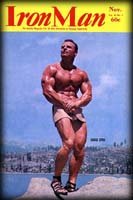 The initial flame that would change my physical being for the rest of my life was ignited three times. The first was when I walked into a local drug store in Ketchikan. I was perusing the magazine rack and was shocked when I saw the rugged and massive Chuck Sipes on the cover of the May 1962 issue of Weider's Mr. America magazine. I immediately purchased the magazine, safely tucked it under my massive 12-inch buggy whip arm, and went home to read it.
The initial flame that would change my physical being for the rest of my life was ignited three times. The first was when I walked into a local drug store in Ketchikan. I was perusing the magazine rack and was shocked when I saw the rugged and massive Chuck Sipes on the cover of the May 1962 issue of Weider's Mr. America magazine. I immediately purchased the magazine, safely tucked it under my massive 12-inch buggy whip arm, and went home to read it.
Ultimately I began corresponding with Chuck through letters and phone consultations regarding the "how-to's" of weight training; I did so until 1974. Later, when I became a bodybuilding journalist, I would write articles about him for Peary Rader's Iron Man magazine.
The second time my flame was lit was June 11-12, 1965, when I had the opportunity to attend the AAU Mr. America Contest in Los- Angeles (as a spectator). Here I was in the big city; I must have looked like I just got off the turnip truck. I accidentally walked backstage and couldn't believe all the Herculean physiques milling around. There was one huge black man who stood out above all the rest, in my mind. Someone said his name was Sergio Olivia.
Catching Flies Or ...
I'm lucky I didn't get the boot, because I was standing there with my mouth hanging open, like I'm trying to catch flies. I must have looked like a deer with its eyes caught in the headlights of a truck, the way I was looking at all the giants of bodybuilding at that time.
It was at this contest that I met Mabel Rader and became aware of the existence of Iron Man magazine. I flew back to Ketchikan and began a new assault on my bodybuilding endeavors, armed now with not only Mr. America magazine but Iron Man as well; they were my best friends. There was no other choice.
I lived (still do) on an island that is 60 miles long and only accessible by boat or commercial airplane. I was the only person crazy enough to do the bodybuilding thing. People made fun of me and even laughed at my new hobby. My Dad even said I wouldn't amount to anything. My Mom was my sole support. Still, I was a lonely as a fever blister on a snowball. But I trudged on.
Moving To Miami
The third time my flame and passion for bodybuilding were ignited was in 1966, when I moved to Miami, Florida. It was my privilege to meet Donne Hale, who was the east coast's bodybuilding guru of the time.
 Donne seemed to know that bodybuilding wasn't going to be a short-term love affair for me. He realized it was going to be a part of my lifestyle forever, and he pulled out all the stops to supervise my training and nutritional needs during the 9 months I lived in Miami. Previously I was self-taught through the mainstream muscle magazines as to the "technique-emphasis" of certain exercises. Actually, I did pretty good, but it wasn't by accident, because I would wade through them with a fine-tooth comb in search of highly guarded tips and secrets.
Donne seemed to know that bodybuilding wasn't going to be a short-term love affair for me. He realized it was going to be a part of my lifestyle forever, and he pulled out all the stops to supervise my training and nutritional needs during the 9 months I lived in Miami. Previously I was self-taught through the mainstream muscle magazines as to the "technique-emphasis" of certain exercises. Actually, I did pretty good, but it wasn't by accident, because I would wade through them with a fine-tooth comb in search of highly guarded tips and secrets.
I would beg, borrow or buy any and all magazines, books and courses pertaining to bodybuilding, power lifting and nutrition. I still do so! My library has more than 500 books and courses, more than a hundred audio and video tapes, and more than 3,000 magazines. I wasn't called "Dennis, the Mail Order Maniac" for nothing!
Donne Hale's Training
Donne Hale's training beliefs commanded my attention. He taught me not to let my expectations get out of proportion. He said it would take a lot of hard work and perseverance to succeed in the iron game. I fired questions at him continuously -- how much exercise, rest, nutrition? He had plenty of patience, and with his tranquil demeanor he taught me to do multiple sets of varying rep schemes using basic compound exercises such as barbell deadlifts, curls, bench presses, bent over rowing, shrugs, calf raises and full squats.
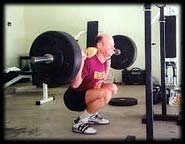 Full squats! What, I wondered, were those? Up until arriving in Miami, I was doing only upper body stuff. I soon found out what full squats were after he loaded up the Jackson cambered squat bar.
Full squats! What, I wondered, were those? Up until arriving in Miami, I was doing only upper body stuff. I soon found out what full squats were after he loaded up the Jackson cambered squat bar.
Donne graciously demonstrated the movement with ease, smiled, and said it was my turn to do 20 repetitions. He had an airsick bag in his hand; wonder what that was for? I found out rather quickly.
After struggling with 20 reps, I didn't feel so good, and soon made the first of many acquaintances with the porcelain god. My lungs felt like they had been ripped out of my chest, and my legs felt like they had been fire-bombed.
This went on for a couple of weeks during my squatting sessions. Donne's old-fashioned, hard-core training methods made Adolf Hitler look like Perry Como. But, lo and behold, all of a sudden, during a 20-rep squatting session, I got an adrenalin/endorphin rush I'll never forget. From then on, high-rep full barbell back squats would be my core exercise for any workout.
Donne, Chuck, and Perry
I moved back to Ketchikan in 1967 and continued with a lot of extra incentive to train in a 12x16-foot building with no heat source. I continued to correspond with Donne, Chuck Sipes, and ultimately Peary Rader for years to come. The three of them collectively became my mentors and awakened my admiration for them for their well-rounded lifestyles.
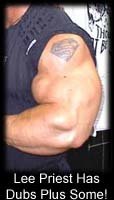 They taught me to have tremendous ambitions but not just in the physical realm. They said for most people a 20-inch arm will not put food on the table or money in the bank. They went on to say I must develop mentally, socially and spiritually in order to achieve success and happiness in life.
They taught me to have tremendous ambitions but not just in the physical realm. They said for most people a 20-inch arm will not put food on the table or money in the bank. They went on to say I must develop mentally, socially and spiritually in order to achieve success and happiness in life.
The training philosophies I learned especially from these three individuals could be summed up as follows:
- Always do general and specific warm-ups.
- Maintain a balanced diet of natural foods.
- Get adequate rest and sleep.
- Don't smoke, and don't drink excessive amounts or alcohol, and stay away from anabolic steroids for life.
- Maintain a tranquil mind.
- Do heavy, non-injury-producing basic compound exercises including neck work.
Now I'd like to give some of the parameters that prepared me eventually to do 20 full reps in the barbell back squat. I never used knee wraps, super-suit, or special lifting shoes when squatting -- a pair of loose-fitting sweat pants, a pair of tennis shoes (with a good support base) were fine for me.
I did wear tight Levis once but ripped those suckers out in the crotch after the 6th rep or so. Doing so obviously indicates a squat depth problem. No curtsy squats for me! I buried each and every rep, butt to the floor. Most lifters carry the usual gear in their gym bag. Not me. I carried a pair of tweezers, just so I could pull out the wood splinters from my rump after a squatting session!
Full Squats
If I had only squatted to parallel, I probably could have worn the Levis, no problem. But I felt I was anatomically blessed to squat deep. Why? I never had any knee, back, or Achilles tendon injuries associated with them. Sometimes I wore a leather lifting belt but not always, and not the stiff, thick ones used today, where it takes 3 good men and a power rack to get it buckled.
I didn't always feel a need for the belt, since my back was strong from pulling 500+ in the deadlift for sets of 10 reps. I did these standing on a raised wood platform where the bar touched my instep. As well, I would do 60 reps in the Roman chair sit-up (a no-no by today's standards) with 60 pounds for the abs.
For years I didn't have a training partner, so I would use wood safety boxes if I got stuck in the bottom position of a deep squat. It was a real pain when I did get stuck, because I'd have to crawl out from under the weight, unload it to around 225 pounds, clean it, rack it and reload.
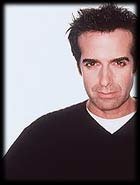 Eventually, when I would get stuck, I'd crawl out from under the weight, rest five minutes and crawl back under it, drive it out of the bottom to lock-out, and then rack it. I'm not going to say it was easy, because it wasn't. I was pooped and usually had to wait 20 minutes before I could do another set of squats. The best I ever came out of the hole with from a dead stop was 485 pounds at a bodyweight of 212.
Eventually, when I would get stuck, I'd crawl out from under the weight, rest five minutes and crawl back under it, drive it out of the bottom to lock-out, and then rack it. I'm not going to say it was easy, because it wasn't. I was pooped and usually had to wait 20 minutes before I could do another set of squats. The best I ever came out of the hole with from a dead stop was 485 pounds at a bodyweight of 212.
While my squats were decent, pressing movements like benches sucked! It was a lucky day if I could bench press 300 for a triple, and then I would need a 3/4 ton hoist and David Copperfield (the magician) to help me levitate the bar up. Maybe that's why I never excelled at benches. I had the 3/4 ton hoist but Copperfield was just a kid back in the '70s.
Conventional Straight Squats
Fifty percent of the time I would use a conventional straight bar for squats, and other times a Jackson cambered bar (weight is carried lower in the center of gravity). I always padded the bar with armoflex. Over the years I used a number of training programs to accomplish my goals of squatting 20 reps with new poundages. Here are a couple of them:
-
I. On this program I would do 5 sets of 8 reps in the power-style squat with 84-88% of my current one-rep max. I still squatted deep but carried the bar low on my traps and used a shoulder width foot placement. I was explosive on these. After completing the 5 sets, I would drop back to 60% of my one-rep max and do one set of 10 reps in Olympic high bar style, with my foot placement no more than 12 inches apart. Each workout I added two reps more than the previous, until I reached 50-60 reps. I trained twice a week.
II. This program is a Peary Rader special. I would take a poundage with which I could barely get 10 full reps and with a lot of mental tenacity would finish out with 20 reps. This was done twice a week. I'd add weight whenever possible, say, 5-10 additional pounds once a week, and just keep grinding out 20 reps, but just for a couple of sets per workout.
Eventually these commando-tough workout sessions got me to the point where I was able to do 20 rock-bottom barbell back squats with 405 pounds, without a warm-up of any kind. I wrote a bout it in a series of articles for Iron Man magazine in the late '70s, entitled "Bits of Advice & Routines." Then a funny thing happened ...
The Knock
One evening during the late 1970s, in the month of June, I heard a knock at my door. I opened it and saw two guys in their early 20s. My first thought was, Oh, great, two guys who are working their way through college, probably selling magazines or, worse yet, fur-lined bathtubs. They said, "Are you Dennis B. Weis," to which I replied, "If you're from a collection agency or the IRS, then no!"
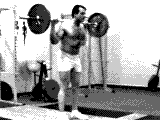 They assured me they were from neither, so I admitted I was in fact the person they were seeking. They went on to say that they were up here on a commercial fishing boat from San Francisco and wanted to stop by and chat, since they were avid readers of Peary Rader's Iron Man magazine. They had read in my "Bits of Advice" series that I could do full barbell back squats with 405 for 20 reps without a warm-up, and they said, frankly, they didn't believe it.
They assured me they were from neither, so I admitted I was in fact the person they were seeking. They went on to say that they were up here on a commercial fishing boat from San Francisco and wanted to stop by and chat, since they were avid readers of Peary Rader's Iron Man magazine. They had read in my "Bits of Advice" series that I could do full barbell back squats with 405 for 20 reps without a warm-up, and they said, frankly, they didn't believe it.
I remembered writing that in the article, but I said that while I was capable of that feat, it didn't necessarily mean it was an everyday occurrence that could be done at any time during, say, a 5-year span. Peaking levels vary, but I told them they were in luck because I was indeed in shape to perform 405 pounds for 20 reps. We left the house and walked down the road a couple of blocks to my 12x16' workout shed. There was just enough light coming in through the windows, even though it was late evening, which meant I didn't have to crank up the propane lamp.
I was lucky it was June and not December so I didn't have to scrape off frost from the bar. I directed their attention to my squatting apparatus, a York portable dip bar attachment hooked to a Peter Dodge Dynatron A-Frame. Two wood safety boxes were positioned nearby. I asked the guys to count up the weight on the squat bar (that was resting atop the dip bars), "And don't forget to include the weight of the bar," I exclaimed. They counted 405 pounds. I could tell they were surprised that it was loaded and ready; I told them it had been this way for a few months. I didn't have training partners, so I could leave equipment as it was.
Stand Back
I asked them to stand back as I prepared to squat. I took 20-30 seconds and mentally, through visual imagery, saw myself successfully completing 20 deep squats with perfect motion and form. I was getting an inner rush, so I knew I was ready.
I approached the squat rack, grabbed the bar about 6 inches wider than shoulder width, with both hands. I dipped down slightly so that I could center the bar high across my traps. Then I stood up with the weight and methodically but vigorously stepped back from the squat rack, taking no more than two steps with each foot. I spaced my feet about 12 inches apart (where I felt the strongest) and rotated them out laterally from parallel at about a 45-degree angle. I locked my legs, arched my back, tightened my abs and made sure my chin was parallel to the floor. I was now ready to begin the first of 20 reps in the standing pause squats.
I took a huge, deep breath and proceeded to squat down to rock bottom. I know from practical application where my below-parallel rock bottom position is so I can squat in one smooth motion without worrying about having search for the bottom position. My negative or eccentric speed took about 4 seconds per rep going down. I never considered squatting to where the tops of my thighs were only just parallel to the floor. I never experienced any sacroiliac danger or knee joint injury squatting rock bottom, although this might not be the case for many squatters. I suspect my controlled descent was partly responsible for this, as opposed to the crash-dive or collapse style descent.
As I descended, my shins almost always extended over the instep of my feet, but no further. Immediately upon reaching rock bottom I would begin the ascent upward, still holding the deep breath of air. As I moved out of the squatting pocket, I always led with my head and chest to keep my hips from rising too fast. I'm really fighting the mindless weight up, and this of course is only the first of 20 reps. Remember, I'm doing these suckers without a general or specific warm-up of any kind, so I expect the first few to be brutally hard, vein-bulging efforts.
 As I near the top of the movement, there is less strain, so I expel the air. It took me about 3 seconds to complete the positive or concentric phase of the rep. I breathe in 3 huge breaths quickly, grit my teeth and grind out another rep. I continue on in this manner for 8 more reps -- three deep and determined breaths and do the rep.
As I near the top of the movement, there is less strain, so I expel the air. It took me about 3 seconds to complete the positive or concentric phase of the rep. I breathe in 3 huge breaths quickly, grit my teeth and grind out another rep. I continue on in this manner for 8 more reps -- three deep and determined breaths and do the rep.
Finally, at rep 10, it starts to get easier, because I'm finally getting warmed up. This goes to around rep 14, and I start to fade a bit, so I start taking 6 breaths between each squat. I of course never racked the bar during the pauses, and while it allowed the blood to free up and circulate through the thigh muscles for a remunerative effect, the spinal erectors were always under tension and swollen beyond belief at the end of a set.
The Last Rep
After the completion of the 20th rep I stepped forward and racked the bar. I never counted from 1-20 when doing the reps but would in my mind divide the whole thing into four 5-rep sets. I'd count 1-5, then the next five I'd count backward from 5 to 1. That left 10 reps to go. From here I'd say to myself, I've got just 3 triple sets to go and one single. I'd do 3 reps, then say I have only 3 sets of doubles and one single. I do two doubles and finish off with three singles. This mental exercise in counting worked for me then and still does today. I really varied this mental exercise of counting once when I full-squatted 300 pounds for 75 reps. I did that on a bet for a lousy hamburger. Never again!
Regarding the numerous rest pauses between some of the varying reps of the set, some people might say that deliberate rest pauses between reps make the set less impacting than doing a set where there is only one deep breath and no more taken between each rep. This is speculative at best, because the bodybuilder who is used to taking only one breath between each rep may not fare any better by taking 3-6 huge breaths between reps and may even do worse, and vice versa.
The two guys from San Francisco were impressed with my 20-rep feat and heartily congratulated me. They appreciated the fact that I could back up the claims I had made in the Iron Man article.
I am proud of the fact that I have been training anabolic-drug free for a lifetime!
For more information on his books, courses & personalized training visit his website at http://www.trulyhuge.com.
As always, if you have any questions or comments feel free to E-Mail me.
muscle@relaypoint.net
http://www.trulyhuge.com
(c) 1997-2002, by Dennis B. Weis "The Yukon Hercules"
Best,
